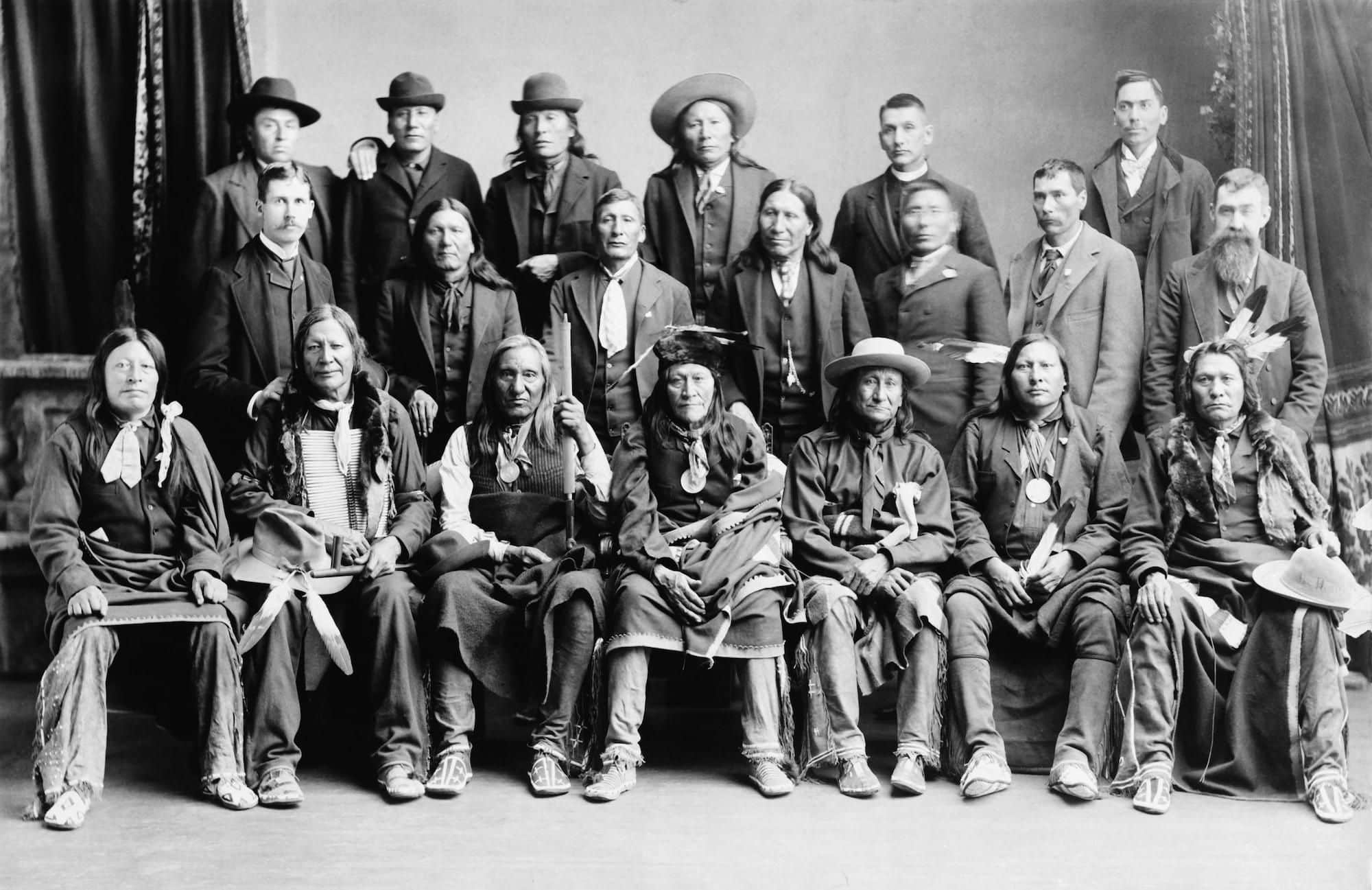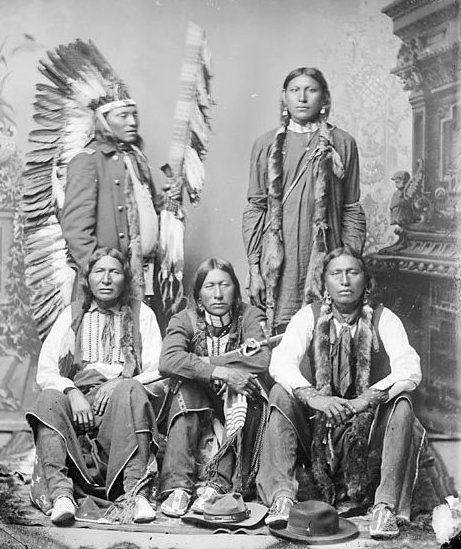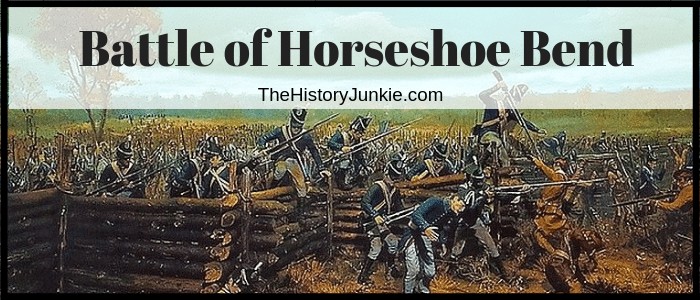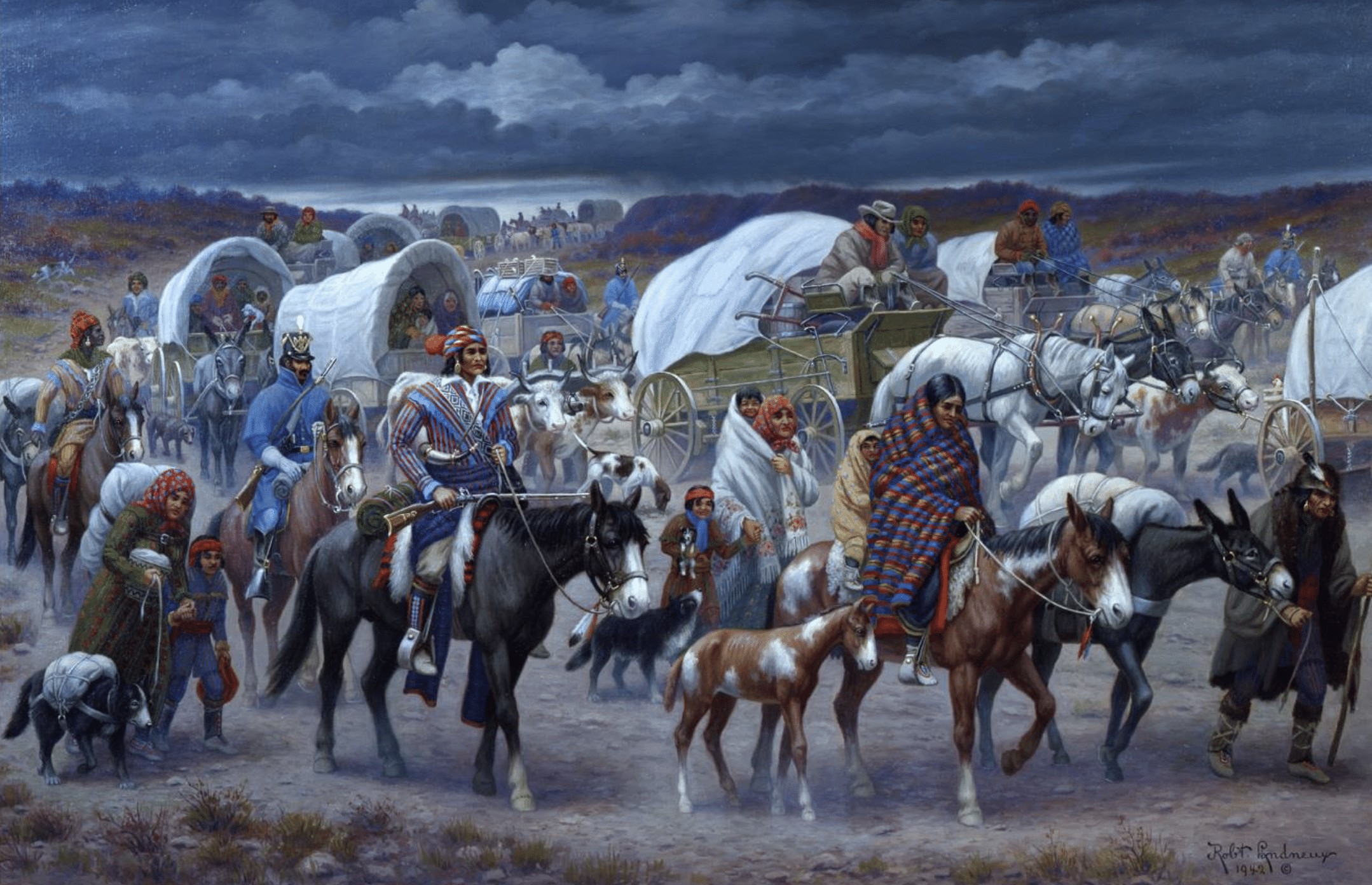
Jump to:
#1. They Have Seven Clans
The Cherokee Tribe can be divided into 7 clans. Each of these clans is run by women who are considered to be the givers of life.
Children born into the clan must marry someone else outside the clan because they are considered brothers and sisters.
The seven clans are as follows:
- Wolf
- Deer
- Bird
- Longhair
- Wild Potato
- Blue
- Paint
#2. The Cherokee Sided With The British During The French and Indian War Then Fought Them
The Cherokee saw plenty of wars against various Native American Tribes in the Southeast and Northeast. During the French and Indian War, they took up arms to fight against the Shawnee Tribe that had sided with the French.
British soldiers built forts in Cherokee country to defend against the French in the French and Indian War on the North American front.
These included Fort Loudoun near Chota on the Tennessee River in eastern Tennessee.
Serious misunderstandings arose quickly between the two allies, resulting in the 1760 Anglo-Cherokee War, which they lost.
#3. The Cherokee Adopted The American Way Of Life In the 19th Century

President George Washington wanted to "civilize" the Native Americans. Most tribes would not go along with it. However, the Cherokee bought into it. Their society changed within a decade.
The government supplied the tribes with spinning wheels and cotton seeds, and men were taught to fence and plow the land, in contrast to their traditional division in which crop cultivation was women's labor.
Americans instructed the women in weaving. Eventually, Hawkins helped them set up smithies, gristmill, and cotton plantations.
The Cherokee organized a national government under Principal Chiefs Little Turkey (1788–1801), Black Fox (1801–1811), and Pathkiller (1811–1827), all former warriors of Dragging Canoe.
The 'Cherokee triumvirate' of James Vann and his proteges The Ridge and Charles R. Hicks advocated acculturation, formal education, and modern methods of farming.
In 1801, they invited Moravian missionaries from North Carolina to teach Christianity and the 'arts of civilized life.'
The Moravians and later Congregationalist missionaries ran boarding schools, and a select few students were educated at the American Board of Commissioners for Foreign Missions school in Connecticut.
In 1806, a Federal Road from Savannah, Georgia, to Knoxville, Tennessee, was built through Cherokee land. Chief James Vann opened a tavern, inn, and ferry across the Chattahoochee and built a cotton plantation on a spur of the road from Athens, Georgia, to Nashville.
His son 'Rich Joe' Vann developed the plantation to 800 acres, cultivated by 150 slaves. He exported cotton to England and owned a steamboat on the Tennessee River.
#4. The Cherokee Tribe Allied With The Americans In The War of 1812

Many Cherokee believed themselves to be Americans and had adopted American religion, education, and culture.
When the War of 1812 broke out, the Cherokee took up arms with their fellow Americans and served and died for the American flag throughout the war.
Ironically, they participated in the Battle of Horseshoe Bend under General Andrew Jackson. They fought against William Weatherford and his Indian Army.
After the war, the Cherokee would draft their own Constitution modeled after the United States.
#5. The Trail Of Tears

The Cherokee had proven themselves to be loyal to the United States. They had been heavily influenced and had even adopted a new Constitution.
However, Andrew Jackson won the presidency in a landslide, and he was an advocate for Indian Removal. Ironically, the tribe that aided Jackson in the War of 1812 would be the very tribe he would oppress.
The Cherokee fought it in the courts and won, but Jackson refused to enforce it and then proceeded to use the United States Military to force their removal.
Many Cherokee would die on the trail, which would become one of the saddest moments in American History. The Cherokee were a civilized tribe that would have and did contribute much to American life. However, racism clouded the judgment of many, including Andrew Jackson.
With the exception of one band, they were removed west to Oklahoma. The Eastern Cherokee still reside in North Carolina, with a population of 8,000. They were able to avoid the Trail of Tears.
